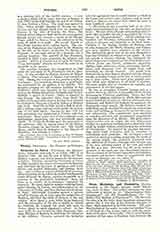

Vittorino da Feltre (VITTORINO DE’ RAMBALDONI), humanist educator, b. at Feltre, 1397; d. at Mantua, 1446. He was the son of Bruto de’ Rambaldoni, a notary, but is best known by the surname of Feltre. Vittorino entered the University of Padua in 1396, attended the courses of Gasparino da Barzizza and Giovanni da Ravenna in grammar and Latin letters, and studied philosophy and perhaps theology. As a student he supported himself by tutoring. After obtaining the doctorate he studied mathematics under Pelacani da Parma, serving meanwhile as a famulus in the professor’s household. Soon his fame as a teacher of mathematics surpassed his master’s. He spent eighteen months studying Greek under Guarino da Verona, his fellow-student at the University of Padua, and then the best Greek scholar in Italy. Afterwards Vittorino opened a private school at Padua, and in 1422, upon the resignation of Barzizza, obtained the chair of rhetoric in the university. After about a year, either being disgusted with the immorality of the city or unable to control his students, he resigned his chair and went to Venice, where he again organized a school. In that year, 1423, he was invited by Gian Francesco Gonzaga, Marquis of Mantua, to undertake the education of his children. Vittorino accepted the invitation with the agreement that he could conduct a school at the Court and receive other students; and he established at Mantua the school with which his name is most familiarly associated.
A villa, formerly the recreation hall of the Gonzaghi, was transformed by him into an ideal schoolhouse. Because of its pleasant surroundings and the spirit that prevailed therein, it was called the “Casa Jocosa” or “Pleasant House”. All the scholars were boarders and Vittorino endeavored to make the school as pleasant and enjoyable as the ideal home. Children of the leading families of Mantua, sons of other humanists like Filelfo, Guarino, and Poggio, and poor children were admitted to the classes. The instruction given was of the new Humanistic type but Christian in character and spirit. It was not merely a literary training, but embraced the physical and moral requirements of a liberal education. Letters (Latin and Greek), arithmetic, geometry, algebra, logic, dialectics, ethics, astronomy, history, music, and eloquence were all taught there, and frequently by special masters. The pupils were directed also in some form of physical exercise, chosen usually according to their needs, but, at times, according to their tastes. There were some general exercises which were obligatory in all kinds of weather. Vittorino taught here as elsewhere by example, and participated in the field games.
He was an exemplary Catholic layman and as a teacher strove to cultivate in his pupils all the virtues becoming the Christian gentleman. Every day had its regular religious exercises at which, like morning prayer and Mass, all assisted. He was a frequent communicant, and desired his students to approach the Sacraments every month. He did not overlook the individual, but he attained his success in overcoming faults and building up character by private direction and exhortation. His punishments were intended as remedies and were not administered immediately upon the discovery of an offense. His great educational service was to adjust the new Humanistic studies to a system of teaching and to show how they could be taught without compromising the principles of Christianity. He insisted on pleasant surroundings, made study attractive, and, by attention to individuals, more profitable. He developed a novel method of physical training, respecting the needs of the various pupils. He eminently succeeded with the education of Cecilia Gonzaga, who became one of the most cultured women of her time and ended her life as a nun. Vittorino has left us no written accounts of his work, nor any educational treatises. For an account of the famous humanists and scholars, statesmen, and prelates whom he prepared for their career, see Rosmini, op. cit., infra, IV.
PATRICK J. MCCORMICK

